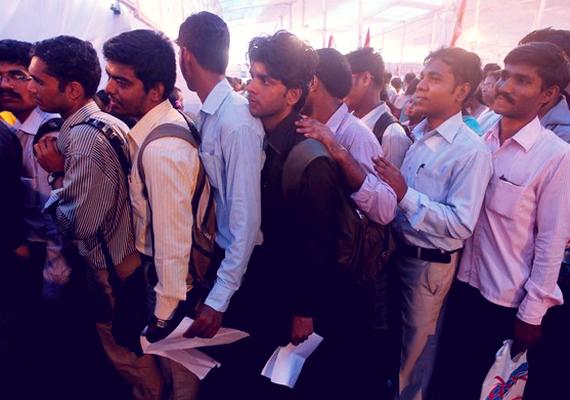Central Statistics Office (CSO), Ministry of Statistics and Programme Implementation have released the fourth series of employment statistics covering the period of September 2017 to July 2018. The newly released employment data calculates the number of formal jobs on the basis of registrations in three major social security benefit programs, namely, the Employees’ Provident Fund (EPFO), Employees’ State Insurance Scheme (ESIC) and the National Pension Scheme (NPS). First statistics on formal sector jobs was released in April, 2018 for the period of September 2017 to February, 2018. Second such report on employment was released in May 2018, covering employment data for the period of September, 2017 to March, 2018. The Third report was released in June 2018, covering the period of September 2017 to April 2018.
According to latest data, EPFO registered 10.5 lakh new subscribers while 38,206 members were added under NPS and ESIC added 13.97 lakh subscribers in July this year. This means almost 14 lakh jobs were created in formal sector in the month of July. For the whole 11 month period of September to July, 1.2 crore people subscribed EPFO while 72.95 lakh people stopped contributing to the scheme and 14.84 lakh members restarted contributing under EPFO. “Net of existing payroll, 36.7 lakh is the count for new payroll generated during September 2017 to July 2018 (total 11 months). Ideally, the number of people who have taken up new jobs after quitting existing one at 14.84 lakh should also be counted as new payroll. If this is the case, the annualised new payroll is coming at 56.2 lakh,” said State Bank of India’s chief economic adviser Soumya Kanti Ghosh.
According to 11 month employment data report, net payroll for 11 month period around 61.8 lakh. The number of people added under NPS is 6.48 lakh while ESIC registered 1.34 crore new subscribers. The ministry is planning to calculate the number of jobs in formal sector through data from these schemes. However, ministry also expressed reservations on taking this data as jobs data because many beneficiaries of these schemes may overlap. “The levels of employment are from various sources, there are elements of overlap and the estimates are not additive,” said the note from ministry. “The report gives different perspectives on the levels of employment in the formal sector and does not measure employment at a holistic level,” it added.
Aadhar linking of subscribers of these schemes has been declared mandatory by the government. Once government completes Aadhaar linking, the subscribers who are counted for more than one time because they had subscribed two or three schemes could be identified. This will remove double counting problem and give detailed data on the number of formal sector jobs being created in particular time period. After seven decades of independence, we do not have any strong mechanism to estimate the number of jobs and employed people in the country. “More than a lack of jobs, the issue is a lack of data on jobs. Our opponents will naturally exploit this opportunity to paint a picture of their choice and blame us,” said PM Modi in an interview with Swarajya magazine.
